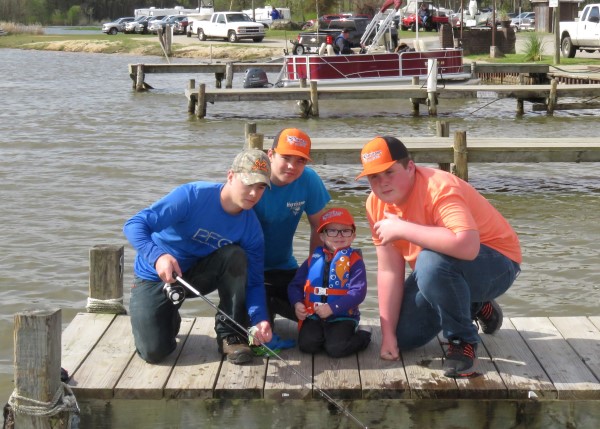Start em’ young and teach em’ right.

Most kids have a natural curiosity about fishing. When they are young, they mostly enjoy seeing the fish and maybe touching them. As they get older, they want to catch them. It’s when they actually start catching fish with their elders that they are prime targets to learn about catfish conservation. It is the responsibility of parents and mentors to take advantage of their formative years to teach them about conservation and why catfish lives matter.
The result may well be a child that reflects the views of his parents and mentors. Nothing is much more satisfying than watching a young person grow into adulthood with respect and love for the outdoors and a desire to protect the resources we enjoy.
We are reminded on a regular basis that our outdoor resources are not unlimited and it is our responsibility to nurture our youth so they understand that too.

The simple act of taking them fishing has to be done with forethought. Planning ahead and doing those things that make for an enjoyable outing will go far in having the opportunity to not only teach them how to fish, but also how to respect the fish and practice good conservation.
In a previous issue of Catfish Now, Joe Schmitt, Ph.D. and Fisheries Biologist, gave these simple tips to consider when taking kids fishing:
- Safety first. Always bring the appropriate safety gear like children’s life jackets, sunscreen, etc.
- Keep them comfortable. If it’s winter make sure they are dressed warmly. If it’s 35 degrees and blowing 30 mph, stay home.
- Bring plenty to eat and drink. A hungry child is a cranky child.
- Know when to throw in the towel. If you’ve been on the water for an hour or two and nothing is happening, go home. Children don’t have the drive, focus, or patience of adults and won’t enjoy the trip with no action.
So, if the overall trip is successful, it is much easier to work in a little conservation education. Even at an early age, there are several things mentors can pass on if the kids are focused and having a good time.
What Kids Can Learn About Equipment
Depending on what the individual mentor uses in the way of gear, many opportunities exist to introduce youngsters to conservation relate concepts. Simple rigging is a start. They will understand immediately the need for a hook to catch a fish. So, the mentor can explain the workings of a circle hook and why catfish are less likely to swallow it. They can further explain that if they don’t swallow the hook, they have a better opportunity to swim away.
Probably the next thing would be the livewell. The younger ones are going to want to play in it and as they get older, they are going to want to put big fish in it. The size of the fish is not as important to begin with, but as the kids get bigger the fish will too. The point is, it is not that difficult to explain the workings of a livewell and how it gives the kiss of life to the fish and prepares it to be released.
If you have a fish sling on the boat it can be used to explain how cradling fish is better for their health than holding them vertically by the jaw. It is also a good time to teach them not to hold them by the gills.

What Kids Can Learn About Keeping Fish
Once a fish is in the boat a variety of things come up related to conservation. First, a decision has to be made as to whether to keep the fish or not. It is the perfect opportunity to discuss selective harvest. Explain to the child that it is better to return the big fish to the water and only keep the small ones which are better to eat. You can also explain to the child that it is better to return the big ones because they are strong and make better babies. The level of the discussion would obviously depend on the age of the child.
This is also the perfect time to practice Catch Photo Release (CPR). Since you have already explained why the fish is going back in the water, you can teach the child how to properly hold the fish to cause the least harm. Practice with small fish that fit the abilities of the child and teach them to cradle and support the fish as much as possible. Not only will you get a great memory of the trip, but you are also developing a youth with the ability to handle fish properly. It will pay big dividends in the future, both for the fish and the youth.
In the end, you want your kids to have as much fun fishing as you do. Hopefully, they will also come to love the sport as much you do. Anglers who attempt to teach their kids about conservation naturally have to spend time with them. That time spent is an additional benefit of the effort. And in this day and age, time in the outdoors is time not spent on electronic gadgets, but time spent on educational endeavors that can actually benefit the future of the sport.



